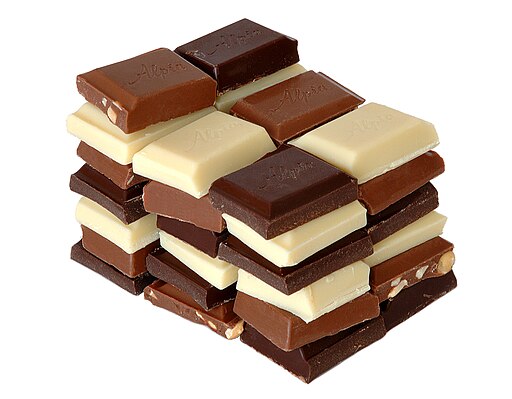I wrote this blog about chocolate fives years ago for Valentine's Day. I thought I would share it again.
======================================================================
"Drop the Chocolate and step away. S-T-E-P A-W-A-Y!"
Most all of us love the taste of chocolate, but for some it means someone may get hurt! Chocolate is a traditional Valentine's Day gift, in a heart shaped box, or in a heart shaped candy, wrapped in red foil. As Charles M. Schulz said: "All you need is love. But a little chocolate now and then doesn't hurt."
Chocolate comes from the seed of the tropical Theobroma cacao tree. Cacao has been cultivated for at least three thousand years in Mexico, Central and South America. The Aztecs made it into a beverage known as xocolātl, a word meaning "bitter water". The seeds of the cacao tree have an intense bitter taste, and must be fermented to develop the full flavor of chocolate.
Much like coffee beans, the cocao beans are then dried, roasted, and ground to form cocoa mass, a pure chocolate called chocolate liquor. The liquor contains two principle ingredients: cocoa solids and cocoa butter. Cocoa solids contain theobromine, a methylxanthine alkaloid chemically similar to caffeine with like physiological effects.
You never know what you're gonna get."
Forrest Gump (1994)
There are numerous types of chocolate made by mixing four ingredients, cocoa solids, cocoa butter, sugar, and milk solids in varying proportions. Additional agents such as lecithin (an emulsifier), vanilla and vegetable oils increase the possible formulations. Here are some of the most common forms used:
 Unsweetened chocolate: Also known as “bitter” or “baking” chocolate. It is unadulterated chocolate: the pure, ground, roasted cocoa beans rendering a strong, deep chocolate flavor.
Unsweetened chocolate: Also known as “bitter” or “baking” chocolate. It is unadulterated chocolate: the pure, ground, roasted cocoa beans rendering a strong, deep chocolate flavor.
Bittersweet chocolate: A dark chocolate that contains at least 35% cocoa solids. Most bittersweet bars contain at least 50% chocolate liquor, with some bars pushing 70-80% chocolate liquor. This chocolate has a deeper, more bitter flavor than sweet dark or semi-sweet chocolate.
Semi-sweet chocolate: A dark chocolate containing at least 35% cocoa solids but is sweeter than bittersweet due to additional sugar.
Sweet dark chocolate: A “dark chocolate” as it does not contain milk solids, but with a high percentage of sugar so it is much sweeter than other types of dark chocolate. Many brands of sweet dark chocolate have only 20-40% cocoa solids.
Milk chocolate: In addition to containing cocoa butter and chocolate liquor, milk chocolate contains either condensed milk or dry milk solids. Milk chocolate must contain at least 10% chocolate liquor, 3% butterfat, and 12% milk solids. Milk chocolates are typically much sweeter than dark chocolate, and have a lighter color.
White chocolate: White chocolate does not contain chocolate liquor or any cocoa products other than cocoa butter. It must contain a minimum 20% cocoa butter, 14% milk solids, and a maximum of 55% sugar.
Chocolate has become one of the most popular foods in the world. It is also used to produce chocolate milk and hot chocolate. The Europeans were the first to sweetened and fattened it by adding refined sugar and milk, two ingredients unknown in the Americas at that time. In the 19th century, Briton John Cadbury developed an emulsification process to make solid chocolate, thus creating the modern chocolate bar.
Chocolate off the store shelf can have whitish spots on the dark chocolate. This is called chocolate bloom and is not an indication of chocolate gone bad. Instead, this is just an indication that the sugar and/or fat has separated due to poor storage. Chocolate must be tempered at specific temperatures to create the right crystalline structure and then properly stored to maintain its composition. Heating or cooling the chocolate outside of its temperature profile can result in this type of separation. Chocolate can also absorb flavors from other foods so should be stored in tightly sealed containers.
A big plus for all of us chocolate lovers is that dark chocolate and cocoa butter have been linked with multiple positive effects. Scientific evidence suggests dark chocolate can help decrease the possibility of a heart attack or other cardiovascular problem when consumed regularly in small amounts and reduces blood pressure in both overweight and normal adults. Finally, studies have shown dark chocolate as part of a low-fat diet can lower cholesterol levels in adults.
So I hope you did not forget your sweetheart this Valentine's Day and bought her a box of her favorite health food, Chocolate!
Song of Songs 7:6 (NKJV) - How fair and how pleasant you are, O love, with your delights!
No comments:
Post a Comment